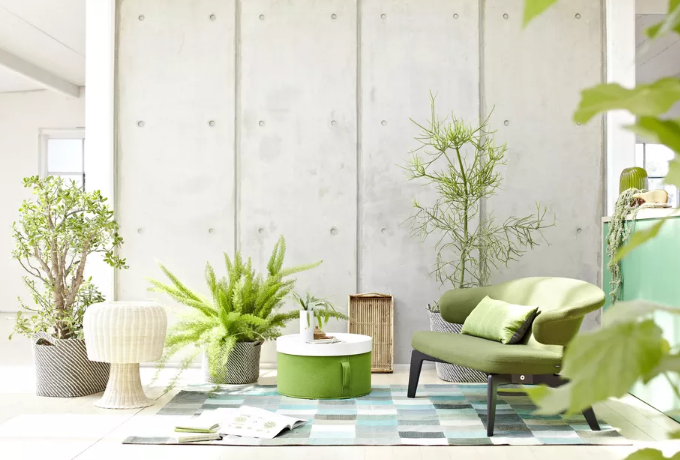While indoor gardeners don’t have to worry about pruning in the same way outdoor gardeners do, sooner or later most of us need to pick up a pair of scissors or pruning shears for a little indoor plant cleanup.
There are several reasons to prune your houseplants. You might prune away dead leaves or branches to keep the plant presentable. You might prune to encourage a more balanced growth habit, or you might prune to keep a runaway plant from eating your living room. Whatever the reason, you should take steps when pruning to encourage healthy growth.
When to Prune Houseplants
Plants should typically be pruned in the beginning of the growth season, which is late winter for many houseplants, or just after they have finished flowering. It’s usually not a good idea to prune plants right before they bloom because you’ll be removing unopened buds.
Regular year-round pruning of woody plants involves removal of dead leaves and branches. These should generally be cut off as close to the stem as possible for cosmetic reasons but never cut a branch flush against the trunk.
Pruning for Plant Health
When pruning to encourage healthy, balanced growth, take a step back from the plant and look at its structure and shape. Then, make judicious cuts to encourage the kind of growth habit you’re ultimately looking for. It’s not a good idea to remove more than 25 percent of a plant’s foliage at one time unless you’re dealing with a plant that likes to be cut down to the soil every spring.
Proper pruning also depends on understanding the plant’s growth patterns. Plants grow from the tip down, meaning that new growth emerges from the dominant bud at the end of a branch or leaf. Although the plant has potential dominant growth cells throughout, the new growth emerges from this final bud. Areas of potential new growth are known as latent buds. These typically occur where the leaf joins the plant stem. To prune a plant and encourage bushy new growth, snip off the dominant buds on select stems. New stems emerge from the latent buds beneath it. While doing this, stagger the cuts to encourage new growth throughout the plant’s structure. Trim some branches back one-quarter of their length; others one-half; and others can be cut nearly back to their base. This way, when the plant leafs out again, it has new growth from the stems outward.
Pruning Vines
Pruning vines follows the same basic pattern, but it may involve more work. Indoor vines should be encouraged to grow along their support, so remove side branches and wandering shoots that want to escape. You might have to do a harder pruning in the summer or spring to cut the vine back to a manageable form. Many vines are notoriously rampant growers when they’re healthy.
Deadheading Indoor Plants
Deadheading is a different kind of pruning—it removes spent blossoms or blooms. As plants bloom, they put energy into their flowers at the expense of new growth. Even as the flower is dying, it is still consuming energy from the plant. To prolong the blooming period and encourage healthier, larger blooms, remove dead and dying blooms by snipping them at the base of the flower.
Keep It Clean
When pruning, cleanliness is important. Just as with people, any cut made into a plant’s tissue exposes it to possible bacterial infection. Keep your pruning instrument sharp and clean and disinfect between plants using a mild bleach and water solution.
Plants That Shouldn’t Be Pruned
Some plants rarely need to be pruned, but some should never be pruned because it will kill the plant. Palms and Norfolk Island pines both form a terminal dominant bud but do not have any latent buds further down. Removing the dominant bud kills the plant. Similarly, many species of orchids cannot be pruned beyond removing dead flower spikes.
Source: The Spruce

